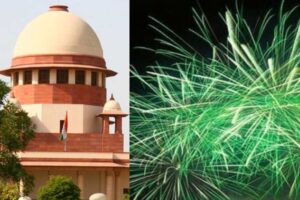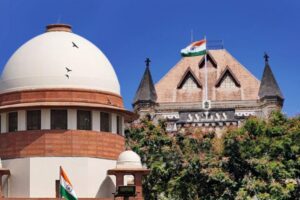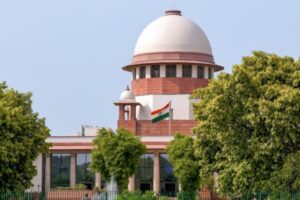
The Centre on Friday opposed a proposal in the Supreme Court to form a committee of former apex court judges to oversee the implementation of measures to curb stubble burning, a major contributor to air pollution in Delhi-NCR.
The suggestion was presented by senior advocate and amicus curiae Aparajita Singh, who proposed leveraging the expertise of former judges for a fact-finding committee.
Singh argued that these judges, who had previously dealt with air pollution and stubble burning issues, could help address the crisis more effectively. She pointed to a 2020 bench led by former CJI Justice S.A. Bobde, which had set up a panel under Justice Madan B. Lokur to address stubble burning, although that order was later recalled.
Singh proposed that the committee, consisting of experienced judges, could monitor the situation and engage with all stakeholders, including farmers and government authorities, for a comprehensive solution.
Singh said, “A committee of experienced judges familiar with these issues could efficiently oversee the situation and hear individual grievances.”
However, the Centre strongly opposed the proposal. Additional Solicitor General Aishwarya Bhati, representing the Centre, argued that the government and the Commission for Air Quality Management (CAQM) were already taking sufficient measures and that adding another judicial committee would be counterproductive.
“There is no need for an additional judicial committee as your lordships are already monitoring the situation,” Bhati asserted, emphasizing that the government was addressing concerns and making progress.
Singh clarified that her suggestion was for a fact-finding committee, but Bhati countered, stating that the government was already working with the available data and frameworks.
During the hearing, senior advocate Gopal Sankaranarayanan pointed out that the timing of stubble burning, combined with seasonal wind patterns, had exacerbated Delhi’s air quality. Singh also raised concerns about discrepancies in the data reported by CAQM and other sources regarding the areas of stubble burning in Punjab and Haryana.
She highlighted a 24% rise in the burnt area in Punjab and discrepancies in Haryana’s data, which contrasted with CAQM reports claiming a reduction.
Bhati defended the CAQM’s methodology, stressing that reliance on unverified sensors could undermine the process.
Singh, however, emphasized the importance of scientifically validated protocols, with expert involvement, and suggested that Punjab and Haryana should be included in these efforts.
The bench noted that while satellites could detect farm fires, they lacked the precision to measure the exact extent of the burnt areas. “We would like to have that data,” the bench remarked.
Previously on November 18, the Supreme Court directed the Centre and the CAQM to use geostationary satellites, instead of NASA’s polar-orbiting satellites, for real-time monitoring of farm fires.
The Court highlighted that existing NASA satellite data was limited to specific time windows and called for ISRO’s involvement in utilizing stationary satellites for continuous, day-long monitoring. The Court will review compliance with these directions and the progress of stubble burning measures in its next hearing.




